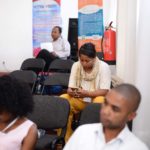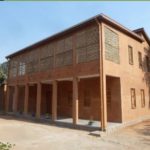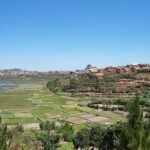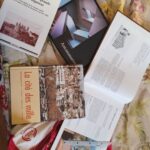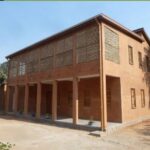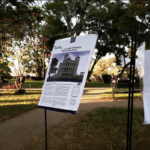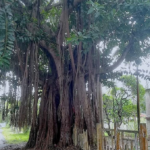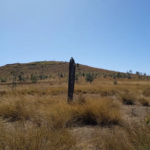![Carte postale. « 27 s. o. Madagascar – Types malgaches – Guerrier Tanosy [Antanosy]. Comptoir Photographique G. Bodeimer – Majonga. Cliché Richard ». © Coll. privée.](https://purplecorner.com/wp-content/uploads/2023/02/guerrier-malgache.jpg)
as usual this thread is undergoing and will be continously updated as I discover more and more Stories within the History
Since I enjoyed so much discovering and sharing the stories of the Princesses, I went on exploring the paths of our Princes who became also somewhat Pirates in their own ways and rights. The trail therefore starts from before the 18th century in the stories in History. There are very very rare written texts and books on Madagascar from this time and most are not written in French. It was therefore necessary to dive into the travel journals of English (Kent is a fun read, for instance he is very critical of Grandidier), Dutch (you’ll love the idea Houtman’s the 1st Malagasy-Dutch Dictionary he learned Malagasy from a Sumatra antandroy cell mate in 1603) , Portuguese (I have yet to dig into Diogo Lopes de Sequeia stories) and Arabs (of course duh) in order to gather informations. And again I am amazed by the marvels of the very great History of Madagascar. I cannot help but being so proud of this self-educating process I started 3 years ago when I had very productive Raombana’s readings during Covid-19 lockdowns back in 2020. You have to start with Raombana by the way. Ny Tantara ny Andriana is next-level read.
![Carte postale. « 27 s. o. Madagascar – Types malgaches – Guerrier Tanosy [Antanosy]. Comptoir Photographique G. Bodeimer – Majonga. Cliché Richard ». © Coll. privée.](https://purplecorner.com/wp-content/uploads/2023/02/guerrier-malgache.jpg)
More than 150 years after the opening of the Silk Road, European routes I say, the French attempted a counter in Madagascar and failed with heavy consequences. We then discover the fate of Houloue, baptized Jerome or Don Hierosme son of Dian Machicore and the more tragic one of his cousins all grandsons of Dom Ramach or Dian Ramisema, King of Anosy a region of Madagascar. These kids were taken as hostages to Paris by Flacourt in exchange for maintaining peace in the region. In “Memoirs of two trips and stays in Alsace 1674-1676 and 1681” H. de l’Hermine recounts the life of Houloue, educated as a gentleman in the court of the Mazarins and reassures us that this young man, to whom we had given in Alsace, the nickname “King’s Son” (Konigssohn), was “very welcome everywhere”, that is to say admitted into the best society.
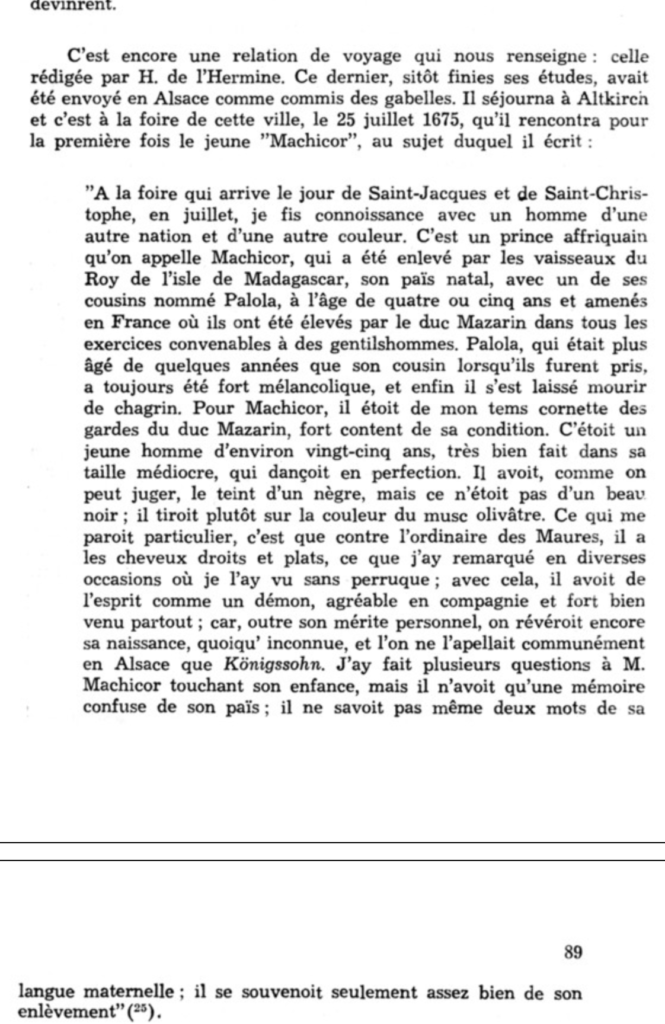
We then go back to this famous Dian Ramisema from Antanosy ethnicity who frightened Flacourt so much that the latter kidnapped his descendants. To our great surprised we learn that himself, so the King, had also been taken from his father to “be educated” in Goa in India. Oh my! I will go back to what was going on in Goa at the beginning of the 17th century a little later. But can you imagine Andriandramaka, renamed Dian Ramach by the Portuguese Jesuits in 1613 or 1614, having to spend 3 years in an environment totally at odds with his civilization? Although he was treated like a prince, efforts to transform this scion of the Anosy dynasty into an intermediary-truchement and even more an ambassador of Western ambitions have completely failed. Once home, he plunges back into traditional rites to the chagrin of the Jesuits.
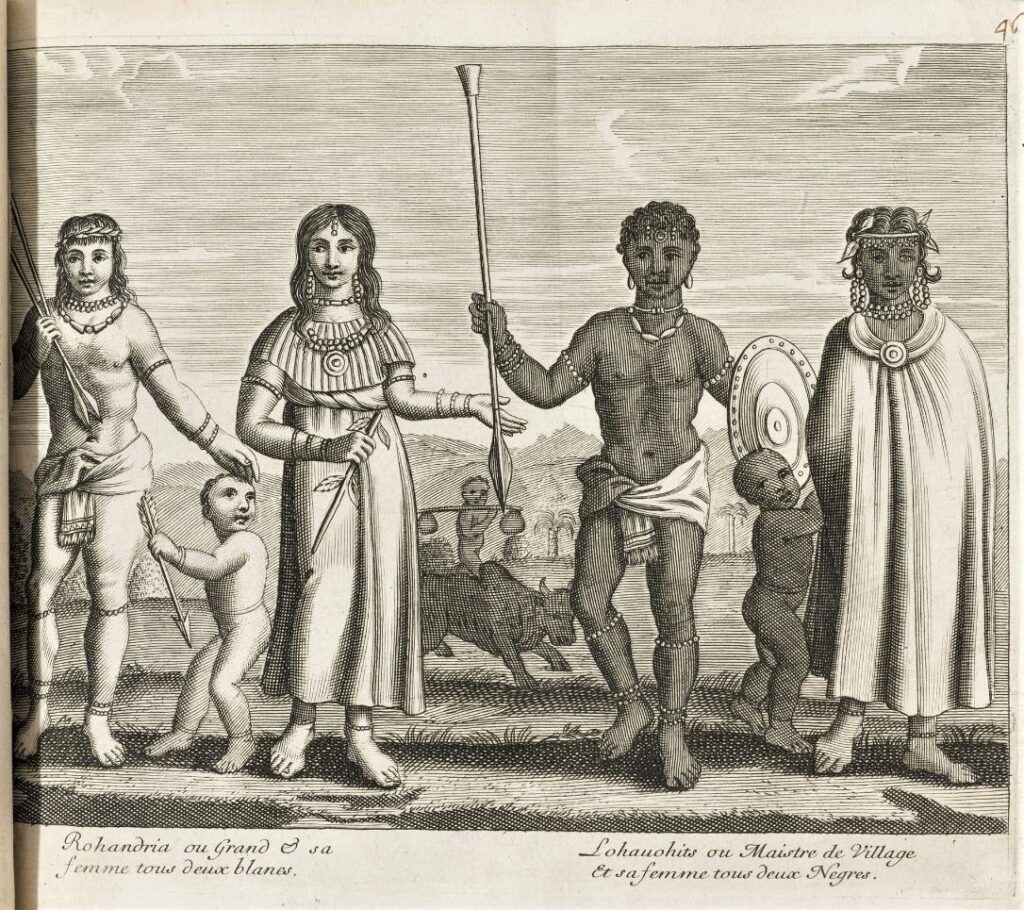
Now I want to go back to the case of Goa. This Indian located Portuguese Vice-Kingdom is similar to that of Esmeralda in Ecuador at exactly the same period of time early 1600s. We learn about Dom Jerónimo Chingulia by reading about the Boeny, a major Sakalava slave center of the 17th century. This young prince of Mombasa, the last Sultan, who was called Yusuf ibn al-Hasan before his stay in Goa in 1614 had to take refuge in Madagascar after suffering the wrath of the Portuguese because he too (there you go again) returned to his traditions once returned to the country. Better still, he becomes a Pirate and opens or rather joins the bicentenary chapter on the abuses or rather the reign of these adventurers in the Indian Ocean. There is a lot to learn on this and I am sure we cross paths with them again somewhen.

So Goa. Was it the equivalent of the deal of Madagascar’s Radama 1st who sent his young nobles to England to come back with the techniques and the knowledge? or rather was it a great center, one of the first European printing works outside Europe for the soft power distribution of the benefits of Western civilization through religion? With the weakening of the Arab influence, the counters and the rise of the Portuguese and soon English in the region, it will be noted that these high places of Jesuit education have spread principles and thoughts still rigorous within our latitudes. In short, I want to dig a little more on this track and I’m sure to come across more young princes such as Dom Jerónimo Chingulia or Dian Ramisema who arrrived at same date in 1614 and while having mastered the language and the practice of the Christian religion, have taken up the torch of resistance even if it means pushing the rebellion to join the bush, the chaos and the seas. I sincerly believe that if they hadn’t been kidnapped or tricked to leave home in first place, things would have turned differently…
We all learned in middle school that Vasco da Gama was the first European in 1498 to find the road to India. What we did not suspect at while teens (and teachers were not very informative on this) is that this new opening, in addition to the “discovery” of America by Christopher Columbus in 1492, was going to exacerbate exploitation and violence in an exponential spiral, already well endorsed for centuries by the Arabs, on the African peoples. I mean they teach that now in 2023 but back in 1994 it was very blurry. Mombasa, Boeny, Fort-Dauphin were very thriving centers of slave trade ruled by powerful African and Malagasy Princes and it is fascinating to read from layered point of views on stories centered around their profiles.
I also recommend the fascinating “The Dawn of Everything” by the late David Graeber and David Wengrow published in 2021 and which is described as “drawing attention to the diversity of early human societies, the book criticizes traditional accounts of development line of history, from primitivism to civilization. Instead, The Dawn of Everything posits that humans have lived in large, complex, yet decentralized polities for millennia.”
____
Links :
Des Malgaches à Paris sous Louis XIV : exotisme et mentalités en France au XVIIe siècle Anne Lombard-Jourdan, https://www.persee.fr/doc/arch_0044-8613_1975_num_9_1_1220
Randriamamonjy, Frédéric (2008). Histoire des régions de Madagascar : des origines à la fin du 19ème siècle (in French). Trano Printy Fiangonana Loterana Malagasy. p. 43.
À propos d’un retour de Goa : Lettre d’un lazariste du Fort Dauphin à Vincent de Paul (5 février 1650) Conférencier / conférencière Nivoelisoa GALIBERT
The Sad Story of Dom Jeronimo, the Last Swahili Sultan of Mombasa; Judy Aldrick; 2020, Old Africa Magazine
https://www.academia.edu/43816446/The_Sad_Story_of_Dom_Jeronimo_the_Last_Swahili_Sultan_of_Mombasa
The Revolt of Dom Jeronimo Chingulia of Mombasa, 1590-1637, Tomé Nhamitambo Mbuia-João Catholic University of America, 1990 – 561 pages
https://books.google.mg/books/about/The_Revolt_of_Dom_Jeronimo_Chingulia_of.html?id=7aYUnQEACAAJ&redir_esc=y
The Madagascar Youths: British Alliances and Military Expansion in the Indian Ocean Region , Gwyn Campbell https://www.amazon.fr/Gwyn-Campbell/e/B001HD1CHO%3Fref=dbs_a_mng_rwt_scns_share


